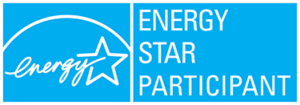Carrier At a Glance
What’s Wrong With Your Carrier Air Conditioner?
Common Air Conditioner Problems and Troubleshooting
Diminished airflow?
Temperature fluctuations?
Leaks?
Compressor malfunction?
Low cooling output?
Carrier Air Conditioner Error Codes
Error Codes
| Amber LED Flash Code | Description |
|---|---|
| ON Solid, No Flash | Standby |
| 1, pause | Low Stage Cool/Heat Operation or Variable Capacity/Emergency Mode |
| 1 (2 Sec ON), Longer Pause (1 Sec OFF) | Variable Speed Range Cutback |
| 2, pause | High Stage Cool/Heat Operation |
| 5, pause | Brown out protection is Disabled |
| 6, Pause | Brown out protection is Active |
| 16 | Communication Loss |
| 25 | Invalid Model Plug |
| 31 | High Pressure Switch Open |
| 32 | Low Pressure Trip |
| 45 | Compressor Winding Fault or Outdoor unit control board has failed |
| 46 | Brownout Event |
| 47 | There is no 230v at the contactor when indoor unit is powered and cooling/ heating demand exists. |
| 48 | Lost Inverter Communications |
| 49 | 230 VAC Dropout-Reset Event |
| 53 | Outdoor Air Temp Sensor Fault |
| 54 | Suction Temp Sensor Fault |
| 55 | Coil Temp Sensor Fault |
| 56 | OAT-OCT Thermistor Out of Range or Improper relationship between coil sensor and outdoor air sensor |
| 57 | Suction Pressure Sensor Fault |
| 58 | Lost Inverter Communications Event |
| 59 | Compressor Scroll Temp Out of Range Event |
| 62 | Compressor No Start |
| 68 | Compressor Sump Heater Active |
| 69 | Inverter Internal Fault |
| 71 | Compressor Motor Temp Out of Range Event or Low Stage Thermal Cutout |
| 72 | Suction Over Temp Event or High Stage Thermal Cutout |
| 73 | Compressor voltage sensed when no demand for compressor operation exists |
| 74 | Compressor voltage not sensed when compressor should be starting |
| 75 | Inverter Temp Out of Range Event |
| 77 | Inverter Over Current Event |
| 79 | Compressor No-Pump Event |
| 81 | Thermal cutout occurs in three consecutive low/high stage cycles |
| 82 | Suction over Temp Lockout or Thermal cutout occurs in three consecutive high/low stage cycles |
| 83 | Low Pressure Lockout for 4 hours |
| 84 | High Pressure Lockout for 4 hours |
| 85 | Compressor Temp Lockout |
| 86 | Inverter Cable Fault |
| 88 | Inverter Temp Lockout |
| 91 | Inverter VDC-Out Over Voltage Event |
| 92 | Inverter VDC-Out Under Voltage Event |
| 93 | 230 VAC Under Voltage Event |
| 94 | 230 VAC Over Voltage Event |
| 95 | High Current Lockout |
| 96 | VDC Under Voltage Lockout |
| 97 | VDC Over Voltage Lockout |
| 98 | High Torque Event |
| 99 | High Torque Lockout |
| - - | OFF |
Carrier Air Conditioner Repair Costs
When to Get a Technician for Carrier A/C Repairs
- The unit stops working
- The unit works erratically
- A refrigerant leak
- The power cord is getting hot
- Compressor or coil malfunctions
- Burning smells
- Lack of cooling power that isn’t related to the thermostat
- Leaks
- Wiring and electrical issues
- Damaged power cord
- Frequent circuit breaker trips or fuse blows
- Strange or loud sounds
Who to Call For Carrier Air Conditioner Repairs
Carrier’s Warranty Coverage
How to Replace Your Carrier Air Filter
- Shut off the unit to protect yourself from shocks and dust
- Find the air filter (usually in the return air duct or on the indoor unit)
- Remove the access panel if necessary
- Slide out the old filter and replace it with a new one
- Use the arrows on the new filter to get the alignment right
- Replace the access panel if necessary
- Turn the unit back on





